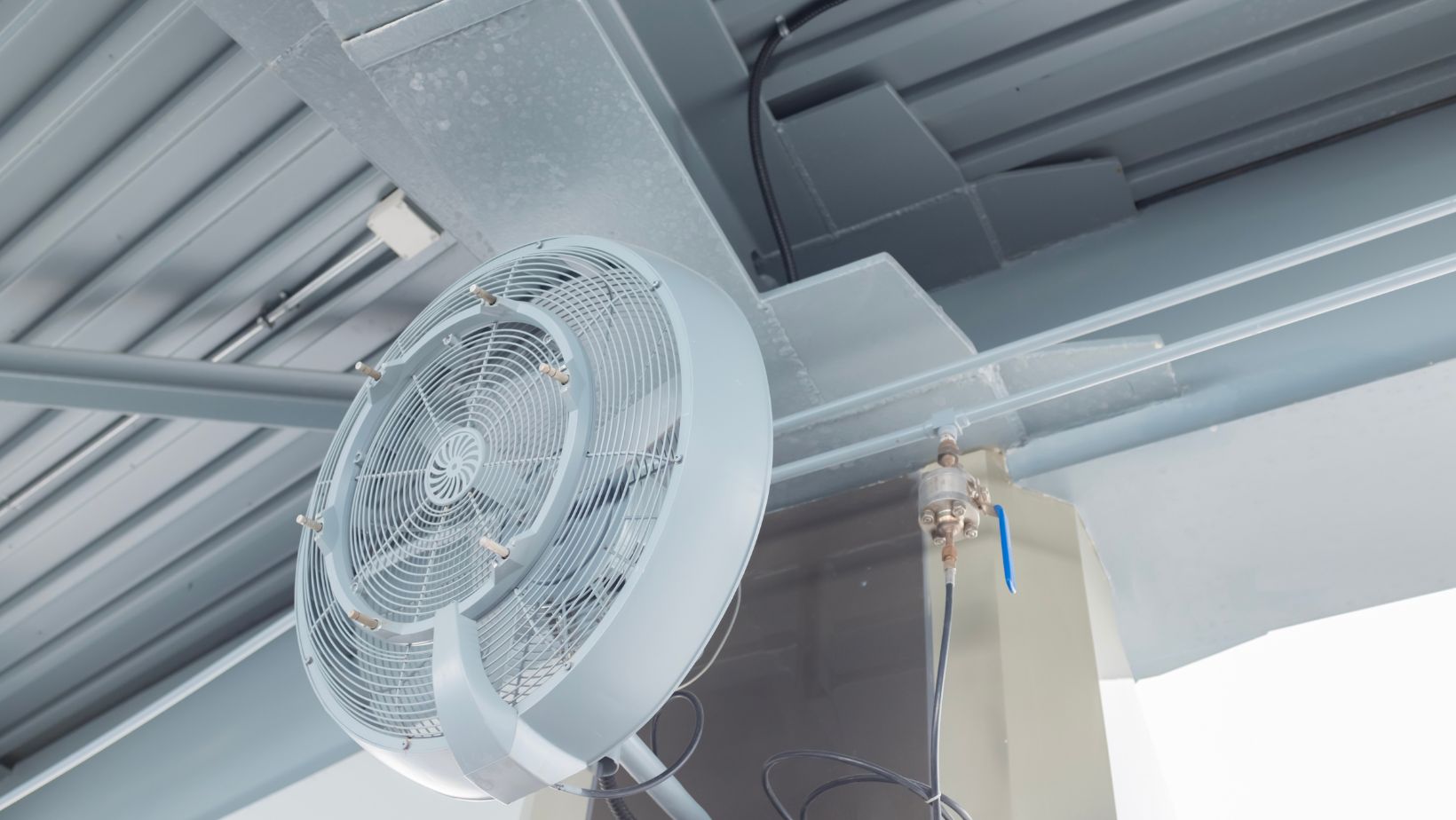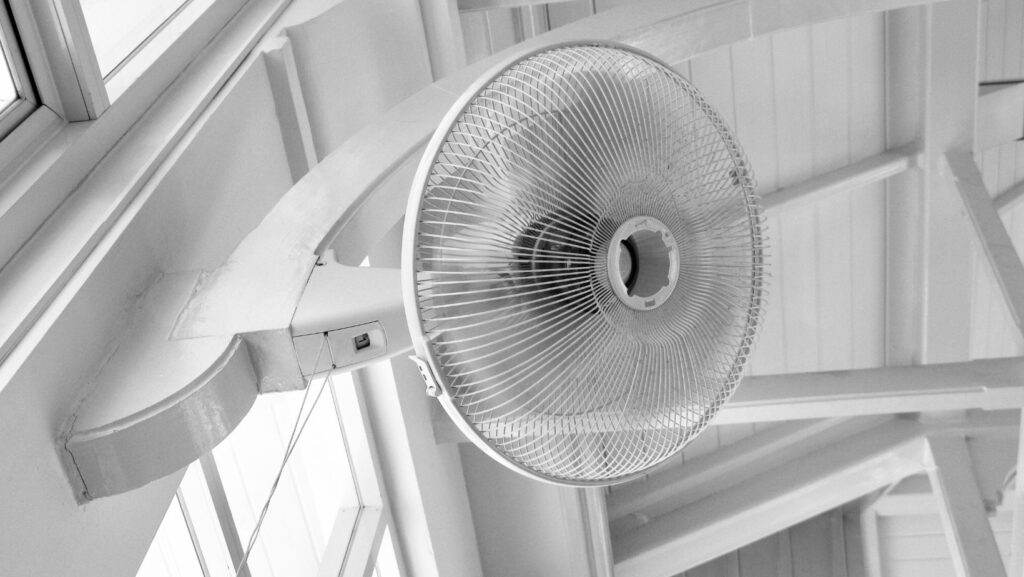Energy-efficient climate control systems have become a central focus across industries, particularly in manufacturing plants, warehouses, automotive facilities, and large-scale distribution centers. As businesses pursue sustainable practices and cost-effective solutions, one piece of equipment has emerged as a quiet champion in industrial environments: the modern wall-mounted fans. These fans not only address airflow challenges in vast spaces but also stand out for their ability to deliver high performance with reduced energy consumption.
As utility bills rise and climate consciousness deepens, facility managers and operations teams are constantly on the lookout for alternatives that marry performance with sustainability. In this context, wall-mounted fans offer a compelling blend of functionality, versatility, and economic value that has redefined industrial cooling standards.
Rethinking Airflow: The Role of Wall-Mounted Fans in Modern Industry
In industrial settings, air quality and circulation are not just about comfort—they are crucial to maintaining safety, product integrity, and worker productivity. Excess heat, stagnant air, and poorly ventilated work zones can degrade machinery, affect employee well-being, and compromise process control.
Traditional cooling methods, such as central HVAC systems or portable ground-based fans, are often inefficient in large, open areas. In contrast, wall-mounted fans offer an alternative that maximizes airflow while minimizing the energy needed to achieve it. By elevating the fan unit off the ground and anchoring it to a wall or support structure, these fans optimize air distribution across work zones without occupying valuable floor space.
This strategic positioning allows the airflow to reach further distances and maintain consistent circulation in areas that may otherwise suffer from hot or stagnant spots. As a result, wall-mounted fans are increasingly becoming an essential fixture in modern energy-conscious facilities.
Reduced Power Consumption with Improved Design
Technological advancements have transformed the design and functionality of industrial fans. Unlike older models that consumed significant amounts of power for minimal coverage, modern wall-mounted fans are engineered with aerodynamically shaped blades, high-efficiency motors, and adjustable speed controls that collectively enhance airflow delivery while reducing wattage requirements.
High-efficiency brushless DC motors, for instance, have become a standard feature in newer industrial fan models. These motors generate less heat, operate more quietly, and require significantly less electricity than traditional AC motors. This translates to direct energy savings, especially in facilities that run their ventilation systems around the clock.
Additionally, variable speed controls allow operators to tailor airflow intensity based on environmental conditions and occupancy levels. During cooler months or lower production periods, fans can run at reduced speeds, cutting down on unnecessary energy use without sacrificing air movement effectiveness. This level of adaptability is critical for maintaining energy efficiency throughout seasonal or operational changes.
Complementary Cooling Without HVAC Dependency
One of the strongest energy efficiency advantages of wall-mounted fans lies in their ability to work in tandem with—or in some cases, replace—large HVAC systems. While HVAC units are effective in controlling temperature, they often require high energy input, especially when cooling vast, open-plan industrial areas. Their operational costs can spiral during hot months, impacting the bottom line for many businesses.
By strategically placing wall-mounted fans throughout a facility, organizations can significantly reduce their reliance on centralized air conditioning systems. These fans help circulate existing cooled air more effectively, ensuring it reaches all corners of a workspace. The enhanced distribution reduces the burden on HVAC systems, allowing them to operate at lower settings or during shorter intervals.
In temperate climates or during transition seasons, wall-mounted fans can even eliminate the need for air conditioning altogether. This not only saves on energy but also extends the service life of HVAC systems by reducing wear and tear from continuous use.
Long-Term Cost Savings Through Operational Efficiency
Though the upfront investment in quality wall-mounted fans may be modest compared to larger infrastructure systems, the long-term financial benefits are considerable. Reduced energy consumption directly translates to lower electricity bills, often offsetting the cost of the fan units within the first few months of operation.
Furthermore, modern fans are built with durability in mind. Industrial-grade materials such as powder-coated steel, corrosion-resistant finishes, and sealed motor housings ensure long lifespans even in challenging environments like manufacturing plants or food processing units. Less frequent maintenance and fewer replacement needs further enhance the total cost of ownership over time.
With energy efficiency mandates becoming more stringent and carbon emission targets pressing businesses toward greener practices, the cost-saving implications of deploying wall-mounted fans are both immediate and far-reaching. For many organizations, these fans represent a proactive approach to sustainability that aligns with broader corporate responsibility goals.
Improved Worker Comfort and Productivity
Beyond mechanical efficiency and cost savings, wall-mounted fans contribute significantly to occupational comfort, which directly impacts worker productivity. Employees who operate in overheated or poorly ventilated environments often experience fatigue, dehydration, or even heat-related illnesses, all of which can reduce performance and increase absenteeism.
By improving air circulation and helping to regulate indoor temperatures, wall-mounted fans create a more stable and comfortable work environment. This is particularly critical in industries such as automotive repair, metalworking, or logistics, where physical exertion is high and external climate control is minimal.
When employees are cooler and more comfortable, their concentration and stamina improve. This not only enhances productivity but also reduces error rates and workplace accidents. By addressing the human element, wall-mounted fans serve as a tool not only for efficiency but also for health and safety.
Versatility Across Industrial Applications
One of the distinguishing features of wall-mounted fans is their adaptability across a wide range of industrial settings. Whether mounted in a warehouse aisle, a factory assembly line, a loading dock, or even a large retail showroom, these fans are capable of delivering consistent performance without interfering with operations.
Unlike pedestal or floor fans that may become obstacles in high-traffic areas, wall-mounted fans are elevated out of the way, providing uninterrupted airflow while preserving ground-level access for equipment, personnel, and storage. Their directional flexibility—through oscillation or manual angle adjustments—allows airflow to be targeted precisely where it is needed, enhancing zone-specific cooling without expending unnecessary energy.
This design makes it easy for businesses to customize their airflow strategy based on facility layout, usage patterns, or production demands, creating a tailored cooling approach that aligns perfectly with operational needs.
Environmental Considerations and Green Building Compliance
Sustainability in building operations is no longer a fringe concern—it is an operational imperative. More industries are embracing environmentally responsible practices, not just to comply with regulations but to position themselves as eco-conscious brands in the public eye.
Wall-mounted fans are particularly attractive in this context because of their alignment with green building standards such as LEED (Leadership in Energy and Environmental Design). These systems contribute to energy performance credits by improving air distribution efficiency, reducing HVAC load, and supporting passive cooling strategies.
For companies looking to earn green certifications or meet internal environmental benchmarks, incorporating wall-mounted fans into their facilities offers an actionable, low-barrier pathway to improved building performance. When integrated with other sustainable technologies like daylighting, natural ventilation, and occupancy sensors, these fans enhance overall energy modeling outcomes.
Maintenance Simplicity and Reliability
Energy-efficient cooling is not just about reduced consumption—it’s also about reliable and uninterrupted operation. Wall-mounted fans excel in this regard. With fewer moving parts than large-scale HVAC systems and minimal dependency on complex electrical setups, these fans require less frequent servicing and are easier to troubleshoot when issues arise.
Routine maintenance, such as cleaning fan blades and checking motor function, can typically be completed in-house without the need for specialized technicians. This simplicity reduces operational downtime and ensures consistent airflow without prolonged service interruptions.
The newer generation of industrial wall-mounted fans also includes models with remote monitoring, self-lubricating components, and built-in overload protection—features that extend performance while keeping energy use low. With a focus on both longevity and dependability, modern fans support continuous facility operations with minimal overhead.
Tailoring Energy Use with Smart Integration
As smart technology becomes more prevalent in industrial operations, wall-mounted fans are increasingly being integrated into building management systems (BMS) or Internet of Things (IoT) networks. These integrations allow facilities to monitor, automate, and optimize fan operation based on real-time data such as temperature, humidity, occupancy, or production schedules.

Whether paired with sensors, timers, or centralized control systems, smart wall-mounted fans exemplify the convergence of traditional utility with digital intelligence. They not only support energy-saving goals but also offer actionable insights into airflow performance and operational trends.
Conclusion: A Smarter Path to Industrial Cooling
Modern industrial environments demand solutions that are both practical and forward-thinking. As energy costs climb and environmental pressures mount, businesses must seek out technologies that support long-term sustainability without compromising performance.
Wall-mounted fans represent one such technology—one that transforms how we think about airflow, temperature control, and energy efficiency in the industrial landscape. With advantages that span operational savings, worker well-being, environmental compliance, and smart integration, these fans are more than just cooling tools; they are strategic assets in a modern facility’s energy management plan.
For any organization aiming to improve ventilation, reduce energy bills, and maintain a comfortable working environment, wall-mounted fans offer a reliable, adaptable, and cost-effective solution. Their growing popularity is a testament to their proven value and the crucial role they play in shaping the next generation of industrial infrastructure.


More Stories
How to Schedule and Prioritize Handyman Projects Efficiently
How Can You Handle Negative Evaluation on Your Dubai Airbnb Listing? Effective Strategies for Hosts
Understanding Buyer Culture for Faster Home Transactions